Wedding Do and Don’ts Tips: Essential Advice for Your Big Day
Planning a wedding can be both exciting and overwhelming. There are many details to consider, and sometimes it’s hard to know where to start. You want your big day to be perfect, and by following some key tips, you can avoid common pitfalls.
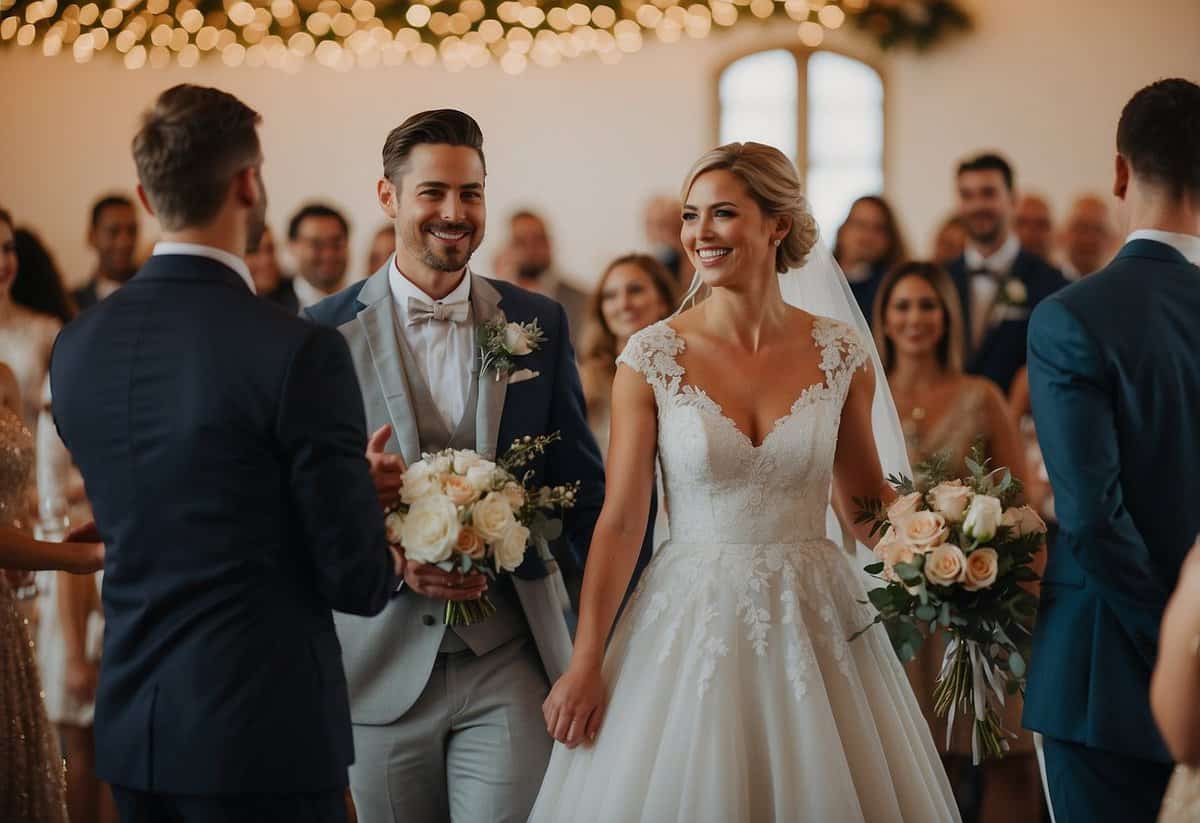
Knowing the important do’s and don’ts can make your wedding planning smoother and less stressful. Whether it’s managing your budget or choosing vendors, these tips can guide you to make the best decisions for your special day.
1) Send Save-The-Dates Early

Sending save-the-dates is an important step in wedding planning. You should send them out about six months before your wedding. If you’re having a destination wedding or a holiday celebration, aim for eight to twelve months in advance.
Giving your guests plenty of notice helps them plan their travels and accommodations. It also ensures they can mark their calendars and keep your special day free.
Send one save-the-date per guest or household. This way, everyone gets the information they need without any confusion.
Make sure your save-the-dates include key details like the date, location, and a note that a formal invitation will follow.
2) Choose a Trusted Photographer
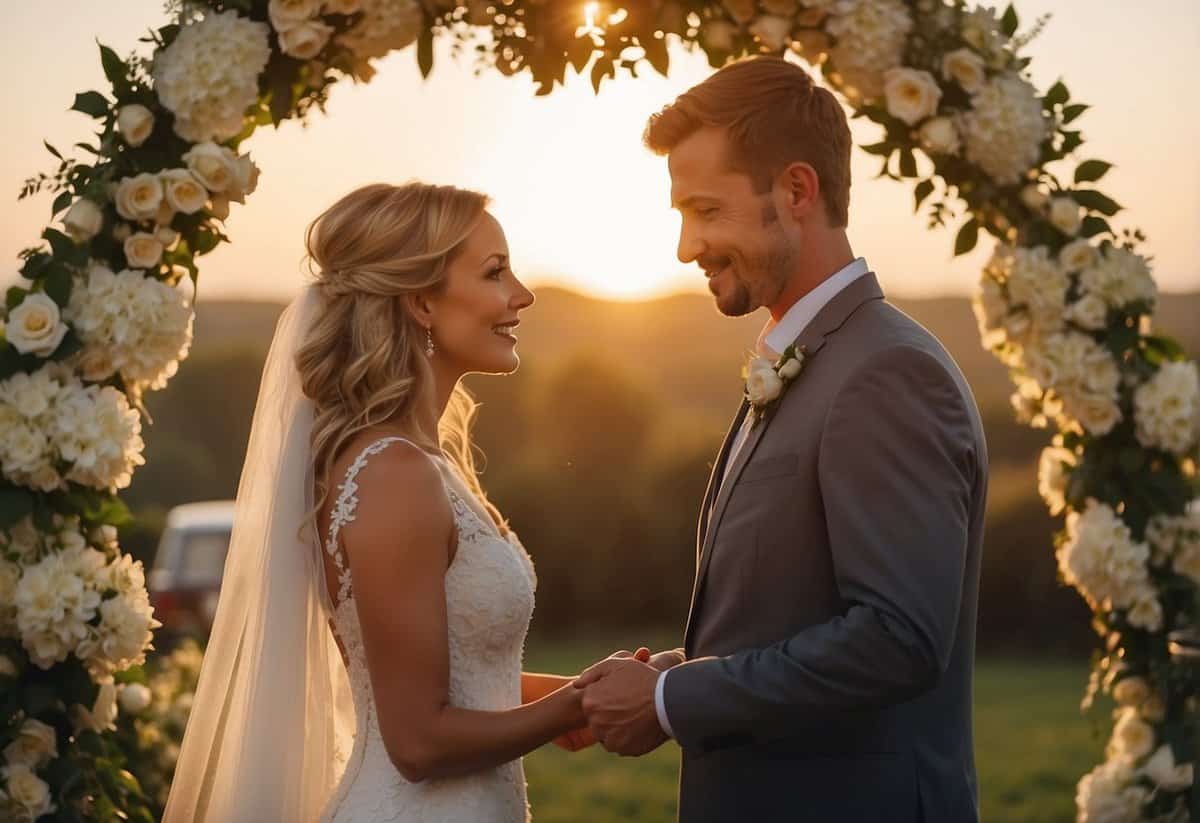
Picking the right photographer is key to capturing the best moments of your wedding day. It’s important to find someone you can trust and feel comfortable with.
Start by looking at different photography styles to see what you like best. Some photographers are great at candid shots, while others excel at posed pictures.
Set a budget for your wedding photography. Generally, couples spend about 12% of their total wedding budget on photography and videography. Make sure the photographer’s pricing fits within your plan.
Read reviews and ask for recommendations. Personal experiences from friends or family can help you find a photographer who is reliable and talented.
Lastly, meet with potential photographers. A personal connection can make a huge difference in how comfortable you feel on your big day. Choose someone who understands your vision and can make it come to life.
3) DIY Invitations Carefully
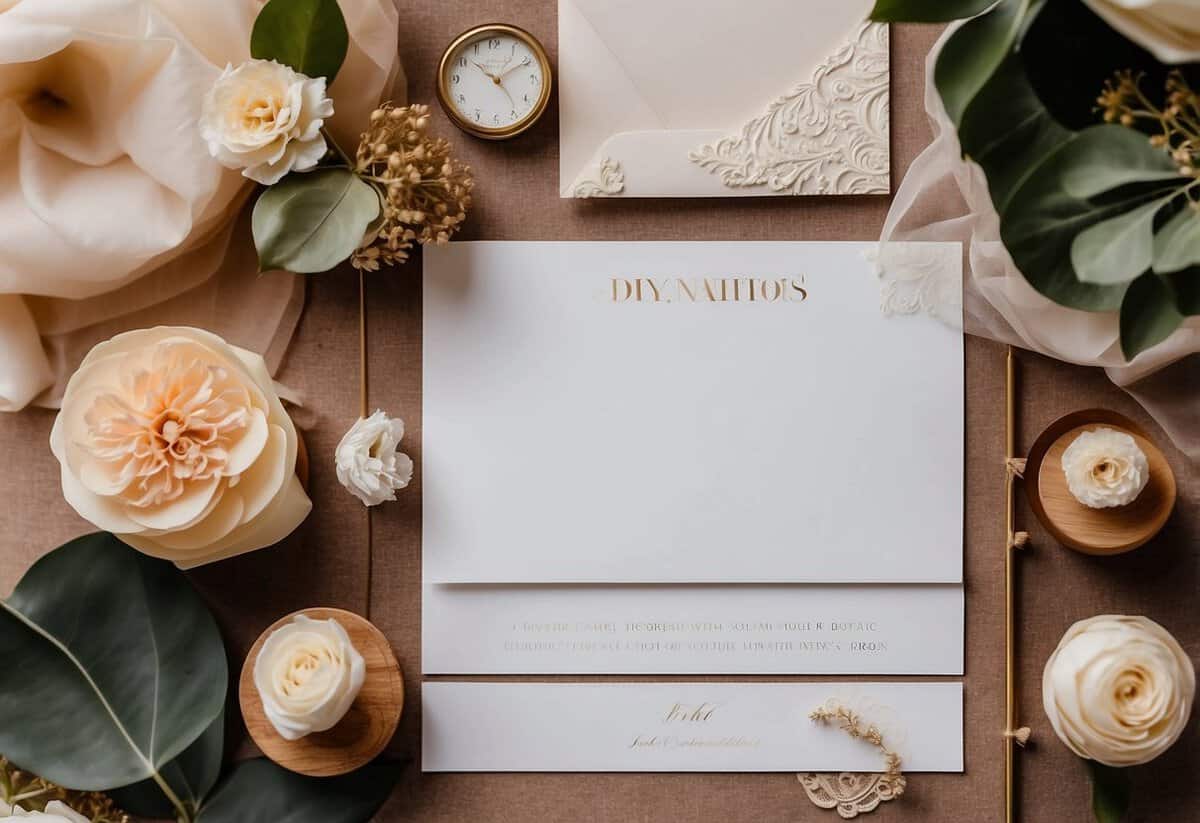
When making your own wedding invitations, focus on the details. Start by choosing the right paper and printing method. Decide whether you want flat or folded invites.
Use customizable templates to make the process easier. Add personal touches like ribbons, gold leaf, or stamps.
Vistaprint offers affordable options, with prices as low as $0.82 per piece. Consider using vellum or acrylic layers for a unique touch.
Make sure all parts of your invitation match your wedding theme. Tie everything together with twine or ribbon.
Place your finished invitations in pretty boxes or folders for a polished look.
4) Create a Wedding Hashtag
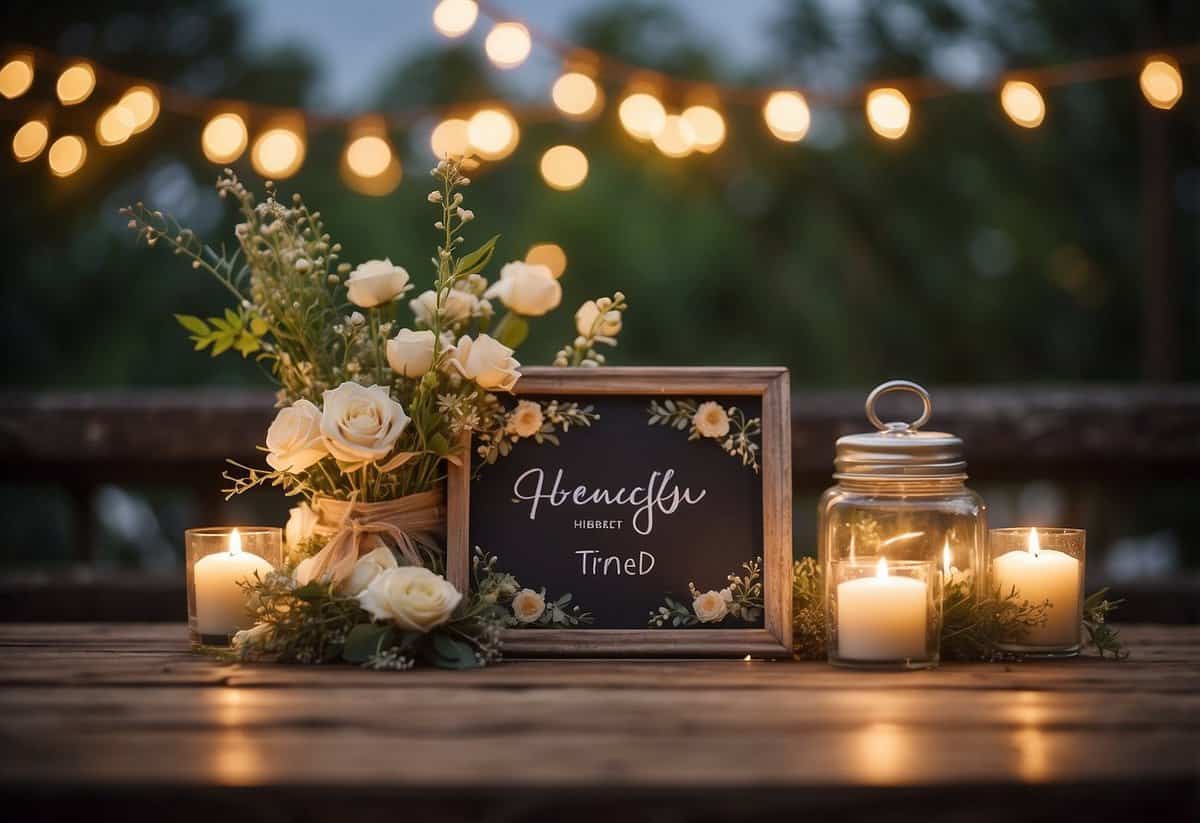
A creative wedding hashtag is a fun way to collect all your guests’ photos and moments in one place.
Try blending your names, nicknames, or even inside jokes. You’ll want something unique so it doesn’t get mixed up with other couples’ hashtags.
Once you decide on a hashtag, use it on your invitations, signs, and social media to spread the word.
5) Hire a Day-Of Coordinator
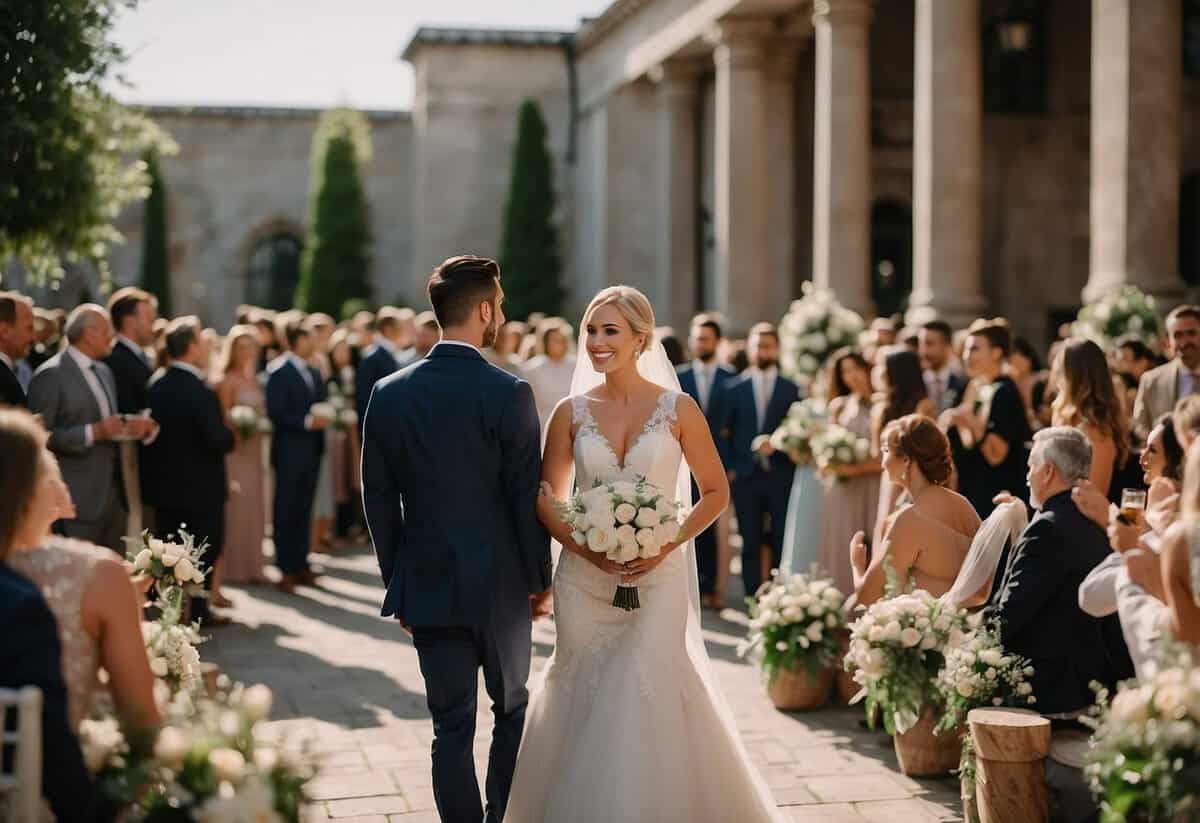
A day-of coordinator helps ensure everything goes smoothly on your wedding day. They manage the timeline, vendors, and any unexpected issues. This lets you focus on enjoying your special day without stress.
Your coordinator can handle setting up decorations and making sure vendors arrive on time. They act as the go-to person for any questions or problems that arise.
Having a day-of coordinator means you and your family can relax and participate in the celebration. It’s like having a safety net to catch anything that might go wrong.
6) Consider Wedding Insurance
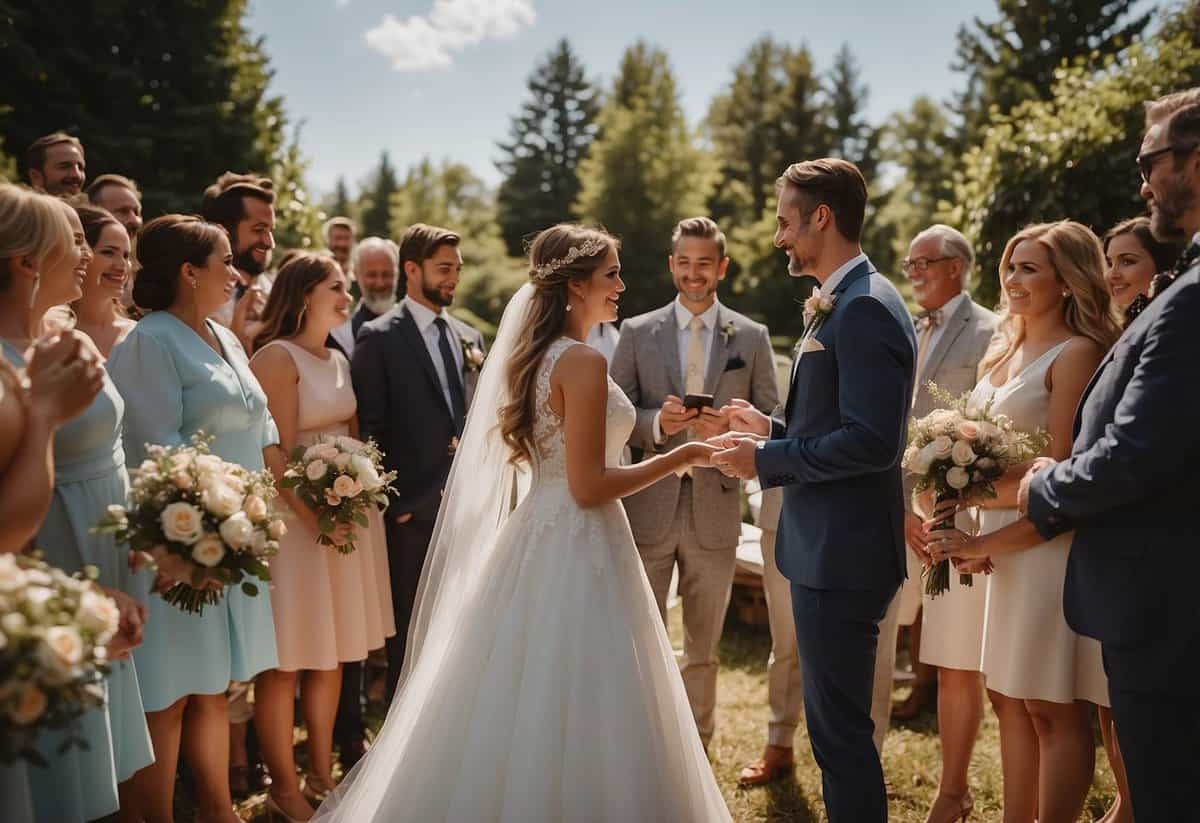
Wedding insurance can be a lifesaver if things don’t go as planned. Imagine unexpected weather or a vendor backing out at the last minute. These events can add stress to your big day.
There are different policies available, covering aspects like cancellation, postponement, and general liability. Basic policies can start as low as $75 and go up to $550.
Liability insurance is important too. It typically covers up to $1 million in case of accidents. This usually costs around $185.
When picking a policy, think about how much coverage you need and what you can afford. Also, check if your deductible suits your budget. Some companies offer discounts if you bundle different types of insurance, so it might be worth looking into that.
7) Have a Weather Backup Plan
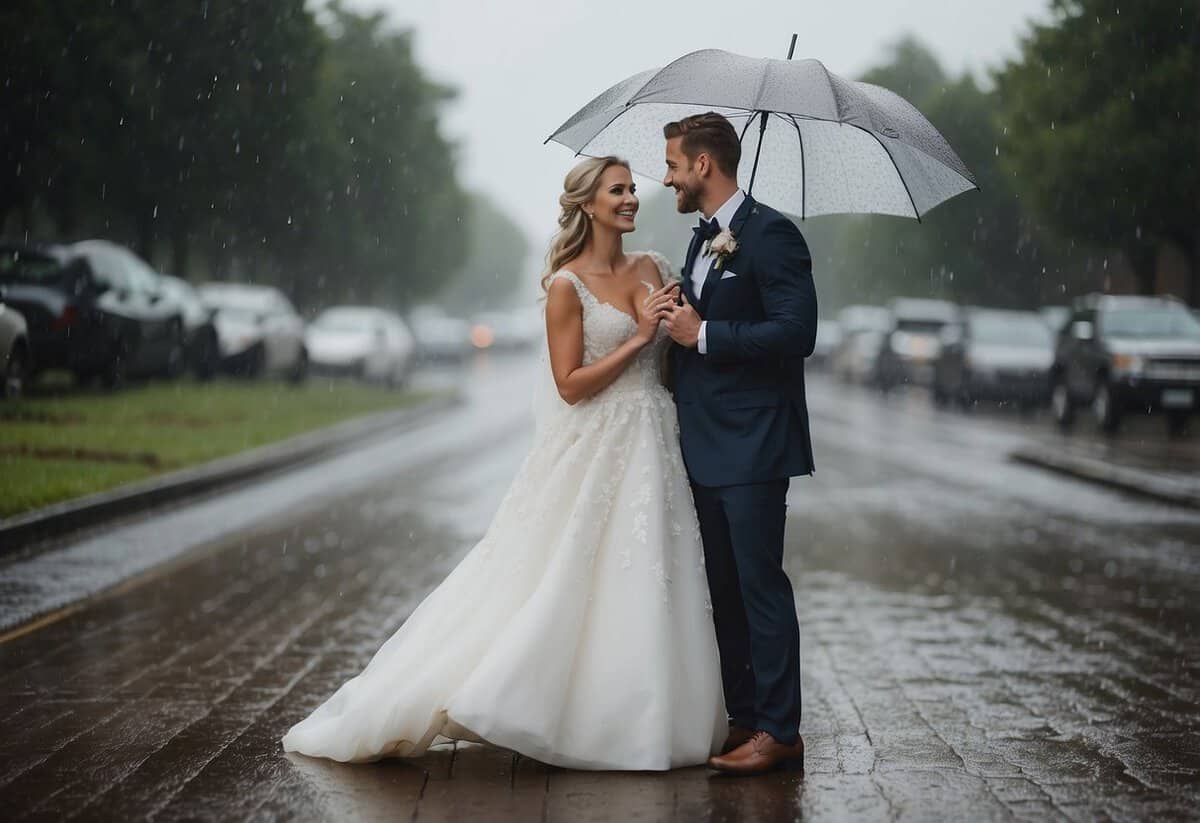
Planning an outdoor wedding comes with the risk of unexpected weather changes. To avoid stress, make sure you have a backup plan in place.
Consider renting a tent or reserving an indoor venue nearby. This way, you can quickly move your ceremony if the weather turns bad. Talk to your wedding planner about your options and ensure the backup plan is clear to everyone involved.
You should also think about ways to keep your guests comfortable. Provide umbrellas or blankets if it gets cold. Sharing your backup plan with your guests in advance can help them prepare better for any last-minute changes.
By preparing for different weather scenarios, you can keep your big day special no matter what.
8) Budget for a Honeymoon

Planning your honeymoon is as important as planning the wedding itself. Start by creating a honeymoon budget early on. This helps you manage your finances better and reduces stress.
Allocate a portion of your overall wedding budget to the honeymoon. Aim for at least 30% of your total wedding expenses. This ensures you have enough funds for your dream getaway.
Consider hidden costs like transportation, meals, and activities. These can add up quickly. Research and factor these into your budget to avoid surprises.
Look for deals and discounts. Often, booking through a travel agent or using coupons can save you money. Always compare prices and read reviews before making any reservations.
9) Double-Check Guest List
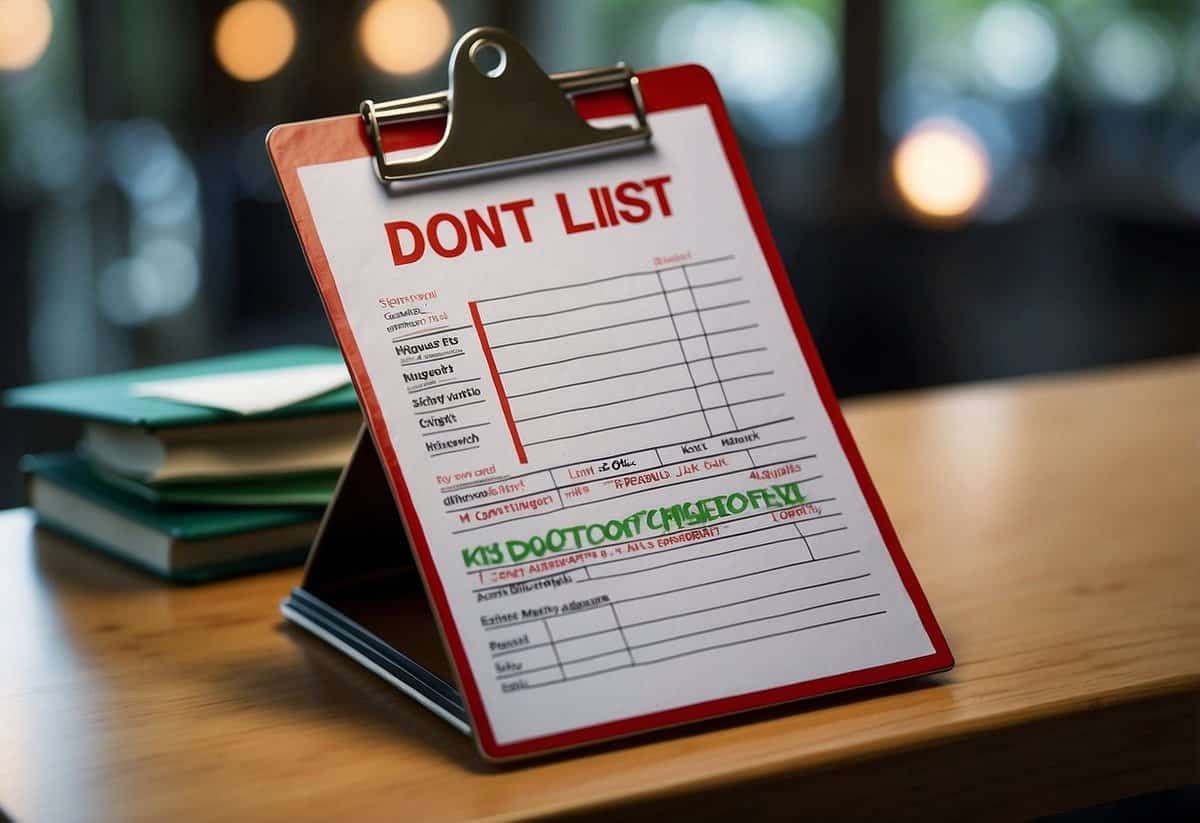
Before sending out invites, it’s important to go over your guest list again. Mistakes can happen, and you don’t want to leave anyone out by accident.
Start by looking at the list of must-have guests first. These are usually family members and close friends. Make sure they are all included.
Next, review the list of possible guests. Are there people you included but now have second thoughts about? It’s easier to make changes now than later.
Lastly, double-check for correct spelling of names and addresses. Missteps here can cause delays or invite mix-ups. Getting this right ensures everyone feels valued and important on your big day.
10) Don’t Skimp on Food Quality
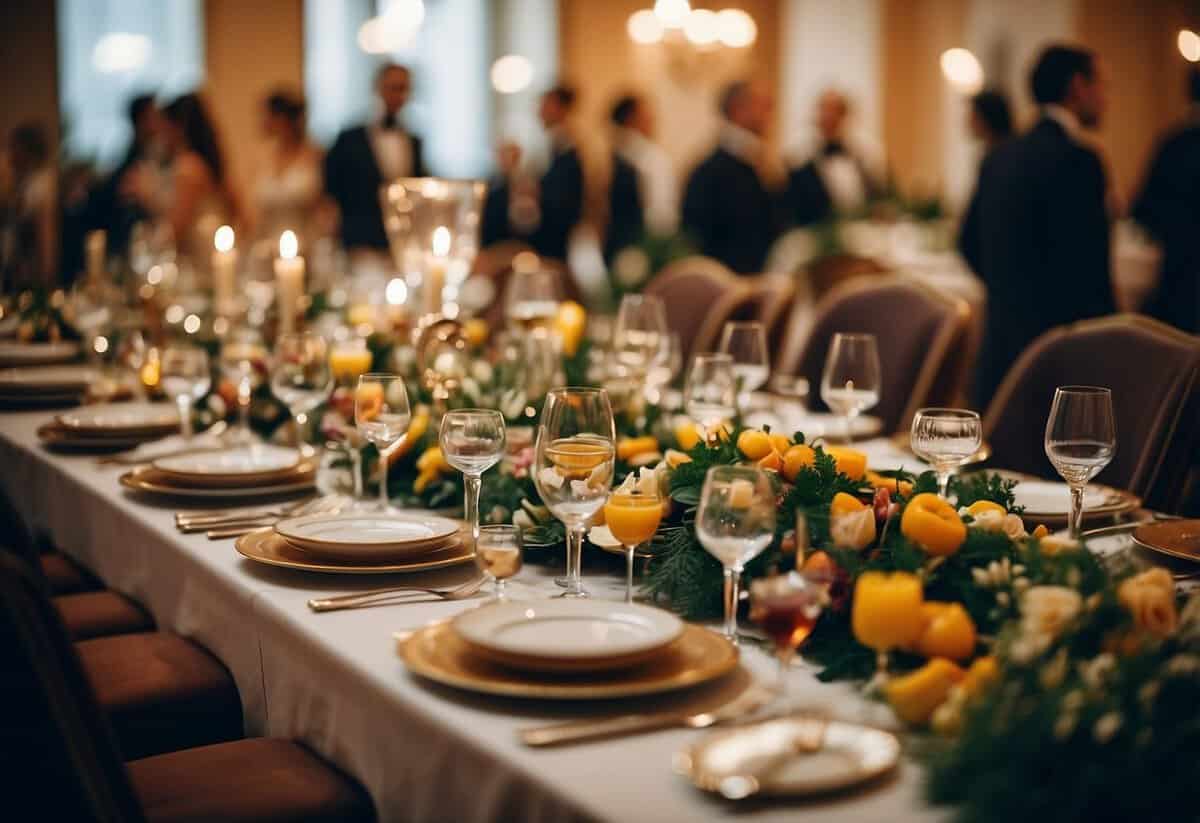
Your wedding day is special, and the food should reflect that. Don’t settle for anything less than delicious and well-prepared dishes.
Make sure to do a taste test before finalizing your menu. This helps ensure the flavors meet your expectations.
Also, consider the presentation. Good-looking food can make the meal even more enjoyable.
Investing in quality ingredients and experienced caterers can make all the difference. Your guests will appreciate the effort and enjoy the celebration even more.
Plan Your Day
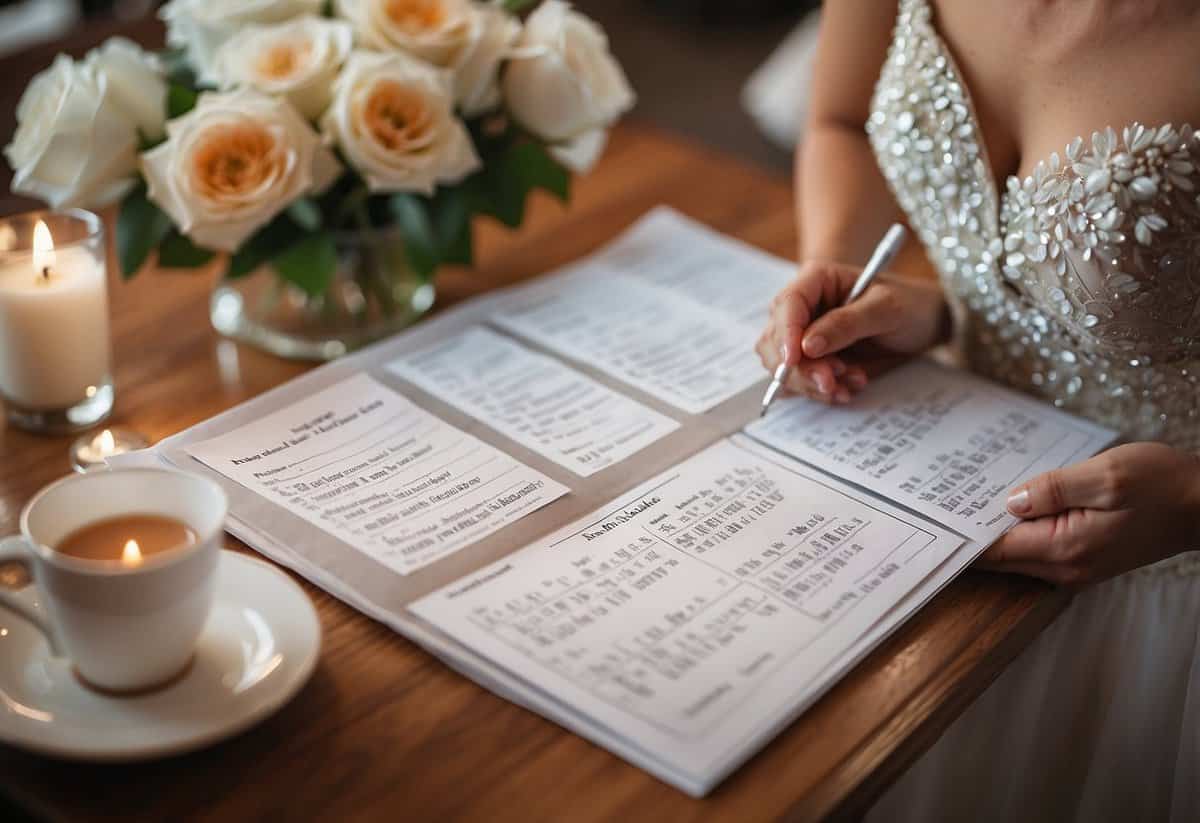
Planning your wedding day involves creating a timeline, coordinating with vendors, and managing your guest list. These steps are essential to ensure everything runs smoothly and everyone has a great time.
Timeline Creation
Creating a timeline helps you stay organized. Start with your ceremony and work backward and forward from there. Decide when hair and makeup should start and how long transportation will take. Consider including breaks to rest and eat.
Make a list of key moments, such as the first dance or cake cutting. Allocate specific times for each. Share this timeline with your wedding party and vendors, so everyone is on the same page. Having a detailed plan reduces stress and keeps events moving smoothly.
Vendor Coordination
Working with vendors is critical. Begin by confirming all bookings well ahead of time. Send each vendor a copy of your timeline and clearly state their roles. Schedule a final meeting or call with each vendor a few weeks before the wedding to address any concerns.
Collect contact information for all vendors, and assign a point person, maybe a friend or family member, to be in touch with them on the day. This way, you won’t be interrupted with questions and can focus on enjoying your day.
Guest List Management
Managing your guest list can be time-consuming but is necessary for a stress-free day. Create a spreadsheet with names, addresses, RSVPs, and meal choices. Keep this updated as changes happen. Communicate early deadlines for RSVPs to avoid last-minute surprises.
Send out invitations 8-10 weeks before the wedding, allowing guests enough time to respond. Consider using online RSVP tools for easier tracking. It’s also helpful to have a seating chart prepared in advance to accommodate any changes quickly.
Planning your day carefully ensures everything runs smoothly and allows you to enjoy every moment without worries.
Dress and Attire Tips

When attending a wedding, it is important to consider your outfit choice carefully. Following the right dress code, avoiding certain accessories, and coordinating with the bridal party can help ensure you look great without stealing the spotlight.
Choosing the Right Dress
Your dress should match the wedding’s dress code, season, and location. For casual weddings, opt for a sundress or dressy casual wear. For semi-formal events, choose a cocktail dress. Black-tie weddings call for evening gowns. Avoid wearing white, as it is traditionally reserved for the bride. Stick to respectful colors and avoid flashy designs like sequins or bright reds that draw too much attention.
Accessories to Avoid
When it comes to accessories, keep it elegant but minimal. Avoid oversized hats, loud jewelry, and anything that clinks or clangs. It’s best to steer clear of anything too bold or extravagant. For instance, animal prints and large sequins can be distracting and take away from the bride. Simple, classy pieces are the way to go.
Outfit Coordination for Bridal Party
If you’re a member of the bridal party, coordination is key. Make sure your outfit complements the overall theme and colors chosen by the couple. Communicate with the other bridal party members to ensure a harmonious look in photos. The goal is to look cohesive while making sure the couple remains the central focus.
Venue Considerations
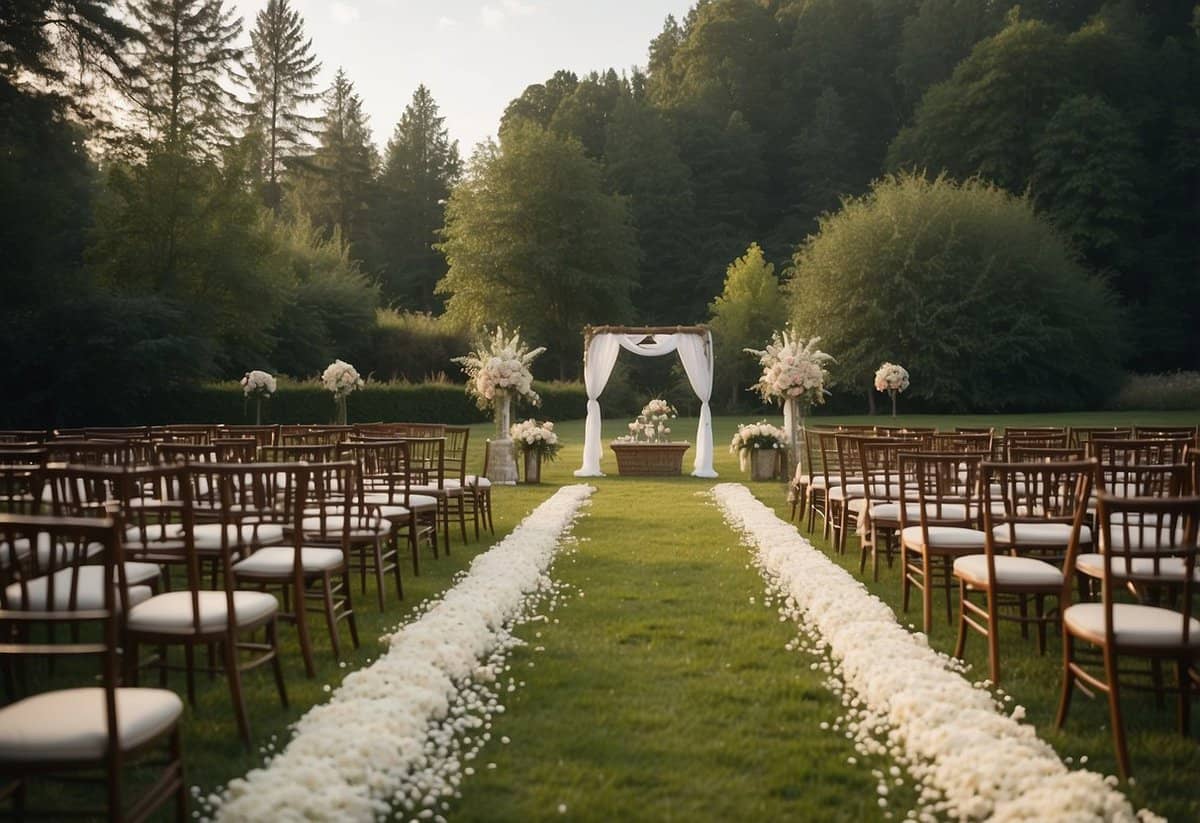
Choosing the right venue for your wedding involves looking at different aspects such as indoor versus outdoor options, decorative themes, and ensuring guest comfort and accessibility. Each detail needs attention to make your special day perfect.
Indoor vs Outdoor Options
Decide if you prefer an indoor or outdoor venue. Indoor venues like hotels, ballrooms, and country clubs offer controlled environments, reducing worries about weather. These locations often provide essential services like seating arrangements and catering.
Outdoor venues offer natural beauty and unique settings such as gardens, beaches, or vineyards. However, they require weather contingency plans like tents or backup indoor spaces. Outdoor locations also offer more flexibility for personalized decorations and layouts.
Consider the season and climate. If you choose an outdoor venue, make plans for both ideal and bad weather scenarios. Ensure facilities like restrooms and easy access to electricity for lighting and sound systems are available.
Decorative Themes
Your venue’s theme must match your wedding vision. For a classic look, indoor venues with sophisticated decor and elegant chandeliers are ideal. These settings often come with existing decor, which can save you time and money.
For a more relaxed or rustic wedding, outdoor venues like barns or gardens provide a natural backdrop which complements themes like vintage, bohemian, or garden chic. Ensure the venue allows for your planned decorations and check if there are any restrictions.
Communicate your vision clearly to your decorator or planner. Make sure the venue’s existing decor does not clash with your desired theme. Use color schemes and stylized elements that fit both the venue and your personal style.
Guest Comfort and Accessibility
Make sure your venue is comfortable and accessible for all guests. Consider guest lists and ensure the space can seat everyone comfortably. Factor in extra amenities like bathrooms, changing rooms, and a comfortable seating area.
Accessibility is crucial. Ensure ramps, elevators, and nearby parking are available for guests with mobility issues. Indoor venues often have better accessibility options. Always confirm these details in advance to avoid surprises on the wedding day.
Pay attention to practical details. Evaluate if there are hotels nearby for out-of-town guests. Clear directions and signage within the venue can help guests navigate easily, ensuring everyone has a pleasant experience.







